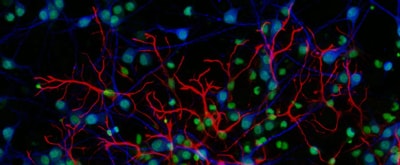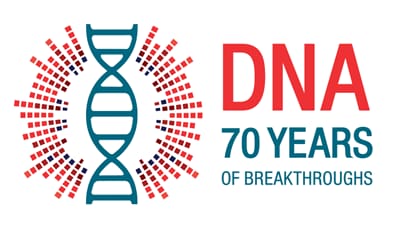Technological Advancements in Fluorescence Microscopy
Introduction
Fluorescence microscopy (FM) has revolutionized research across the life sciences. It offers unprecedented insight into dynamic biological structures and processes from the molecular to organismal scales, transforming our understanding of cellular and subcellular organization, mechanisms, interactions, and development. Though in existence for over 100 years, extraordinary technological advancements over the last 30 years have entrenched FM as a powerful yet affordable imaging tool accessible to virtually any lab.
The Rise of Fluorescence Microscopy
FM’s history is defined by a sustained drive for innovation punctuated by key moments. The first fluorescence microscopes, spun from the advent of UV microscopes in the early 1900s, turned five decades of speculation and discussion into action. In the 1940s and 1950s, immunologist Albert Coons and colleagues conjugated fluorescent compounds (fluorophores) to primary and secondary antibodies to detect antigens, which gave rise to modern immunofluorescence imaging (IF). Osamu Shimomura’s 1961 discovery of the green fluorescent protein (GFP) in jellyfish provided another key tool for FM, though it would not be realized for another three decades. The first iteration of the modern-day epifluorescence microscope appeared in 1967 with the introduction of beam-splitting dichroic mirrors by Brumberg and Ploem.
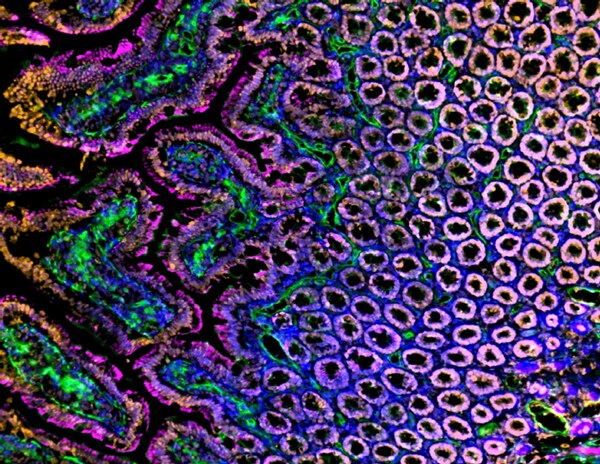
An explosion in fluorescent marker diversity in the 1990’s marked a turning point and the beginning of rapid technological development leading to a massive expansion of FM applications. The sequencing of GFP and subsequent transgenic expression introduced new opportunities in fluorescence imaging, allowing highly targeted labeling of live organisms. Development of numerous variants and other fluorescent proteins quickly followed, while simultaneous improvements to and diversification of synthetic fluorophores boosted IF and other applications previously hindered by dye limitations. Suites of new dyes, like the widely-published Alexa Fluor dyes, were more photostable, pH-insensitive, and brighter, sustaining their brilliance when conjugated. The resulting increase in spectral range and diversity of fluorophores brought more flexibility, deeper imaging, and improved multiplexing capabilities.
In recent decades, innovations in microscopes, illumination systems, methods, chemistry, and image processing have continued their rapid pace, enabling increasingly complex, higher-resolution studies. For example, rapid cellular or molecular interactions can be readily observed in real time with high spatial and temporal resolution using affordable bench-top setups.
Fluorescence Design Considerations
Success in fluorescence imaging studies depends to a large extent on label selection and FM technology. Complex considerations drive marker choice, including interconnecting factors relating to experiment, technology used, and the level of sensitivity and specificity required. Synthetic fluorophores are usually conjugated to targeting molecules, like antibodies or other proteins and oligonucleotides, and come in a broad range of fluorophore reagents and premade conjugates. Fluorescent markers can potentially interfere with the function, localization, or dynamics of a target, so must be carefully considered for application and functionality.
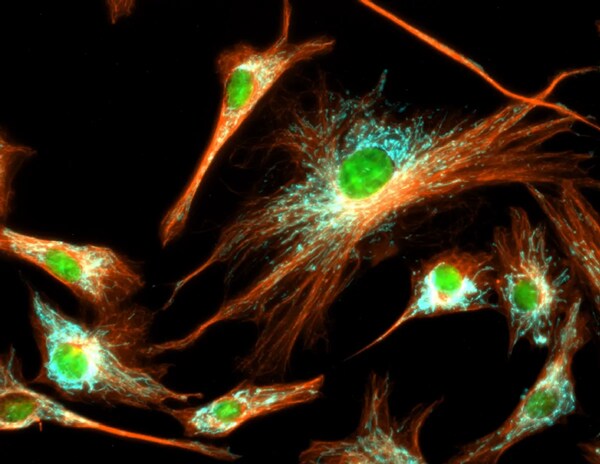
Multiplexing uses complimentary sets of markers to image multiple targets or events simultaneously. It is essential to many studies but requires additional considerations, like relative signal strength and the potential for cross-reactivity. Mapping out the excitation and emission spectra of fluorophores to avoid spectral overlap is critical to obtaining reliable data and has been simplified with Fluorescence SpectraViewer, a free online tool.
Antibodies are still the most commonly used labeling method for FM, typically using primary antibodies that bind to the target antigen, which is then bound by fluorophore-conjugated secondary antibodies that target the primary antibody’s host species and immunoglobulin class. If necessary, low-abundance targets can be further amplified with biotin-binding proteins, such as streptavidin, or other methods like tyramide signal amplification (TSA). In certain cases, direct labeling with conjugated primary antibodies can simplify or enhance protocols, particularly for multiplexing.
Antibodies must be validated for both specificity and application performance (e.g. immunohistochemistry (IHC) or immunocytochemistry) to ensure accurate and repeatable results. Cross-adsorption to eliminate cross-reactivity will improve performance, especially for multiplexing studies. Using different species for the primary antibodies is also required to prevent cross-reactivity.
A lot of FM technologies vary predominantly in their illumination and detector systems. Widefield epifluorescence microscopes are the simplest, most versatile, and most commonly used platforms, traditionally using an intense broad-spectrum light source with optical filters to illuminate the sample. They are fast, easy to use, affordable, and offer image quality and resolution sufficient for many applications. Their rapid imaging capability at lower light intensities makes them ideal for live-cell imaging, especially if further boosted with modern LED light sources. Optical sectioning microscopy, such as confocal light-sheet microscopy and multiphoton microscopy, incorporate high-intensity laser illumination and limit detection to the focal plane. This allows the creation of a three-dimensional data set by acquiring multiple planes in the z-dimension and reduces background fluorescence for higher-resolution imaging. Light-sheet microscopes illuminate samples only along the focal plane, using a thin sheet of laser excitation perpendicular to image capture for very rapid imaging. Some instruments are multimodal, with the ability to switch illumination and/or detection methods. Even within technology types, instruments vary on important parameters like sensitivity and efficiency that impact data quality and study design.
Recent Trends
An increasing focus on systems level biology and the need to observe more than six targets simultaneously has driven a push for greater multiplexing capability, long constrained by spectral overlap in fluorescence palettes. New techniques and computational ability have given rise to “super-multiplex” and “ultra-multiplex” imaging of 15 or more targets. These methodologies exploit alternate contrasting characteristics of dyes with overlapping emission spectra, e.g., by measuring chemical bond vibrations or temporal stability and/or by applying advanced algorithmic spectral unmixing techniques.
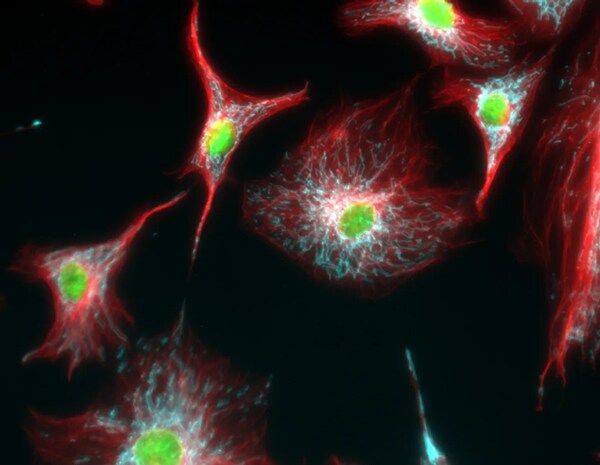
The development and use of LED source lighting in FM has seen a rapid rise, with new diode technology and ever-increasing power feeding its growing relevance to diverse applications. Several important advantages over traditional arc-lamp sources contribute to its popularity. The irradiance (light intensity) of LEDs now rivals arc lamps for widefield FM applications but is dimmable, removing the need for neutral density filters. Imaging speed is increased without shutters or filter wheels, as lights can be turned on and off with microsecond precision and filters can be applied at individual diodes. LED source lighting is also more sustainable, with a lifespan at least 1-2 orders of magnitude longer than arc lamps, one-tenth of the energy consumption, and none of the health, safety, and environmental hazards of the mercury present in arc lamps.
A major theme of LED source lighting is reducing the intensity, duration, and quantity of light exposure of specimens, thereby improving signal strength, reducing noise, and minimizing sample damage. Diodes are available in discrete wavelength channels spanning from 340 nm (UV) to 780 nm (near IR) for selective, multichannel wavelength illumination suiting a variety of applications, including high-speed live cell imaging, calcium imaging, optogenetics, and Förster resonance energy transfer amongst others. Frequently applied to super-resolution microscopy as support lighting to preview regions of interest, LED lighting has also been successfully applied to structured illumination microscopy with camera-limited acquisition speed. Spatially modulated selective volume illumination with an LED source has also provided results similar to light-sheet microscopy. While still very limited in its ability to take on laser illumination in FM, low-coherence LED light produces less speckle or shadow artifacts than high-coherence laser beams, which has the potential to boost image quality.
Current Challenges and Innovations
Photo Damage
Photobleaching (light-induced damage to fluorophores) and phototoxicity (light-induced damage to live cells) are ongoing concerns for most applications in FM and are driven by both duration and intensity of excitation illumination. Photobleaching permanently prevents fluorescence and is caused by photon-induced changes to the fluorophore’s molecular structure. Phototoxicity can negatively impact growth, replication, function, and viability of cells. Most mitigation tactics for both revolve around limiting light exposure through temporal, spatial, intensity, and spectral controls.
Traditional illumination controls can include shutters and filters for wavelength, light intensity (neutral density), UV blocking, and heat. Conversely, the broad reduction in light exposure offered by highly controlled, programmable LED sources has made it invaluable for live imaging. Though longer illumination at lower intensity is best, pulsed or strobed high-intensity light causes less photodamage than sustained high-intensity light due to the rest period for excited fluorophores. FM technologies that limit illumination to the focal plane, like light-sheet and total internal reflection, constitute the most gentle and light-efficient options. Longer wavelengths (e.g., red-IR), like those used for multiphoton microscopy, are considerably less damaging than higher-energy wavelengths (e.g. UV-blue).
Choosing fluorophores with improved photostability will reduce photobleaching and associated phototoxicity. Furthermore, better detection efficiency can allow higher signal-to-noise images with lower excitation illumination. Lastly, antifade reagents can reduce photobleaching significantly for both live and fixed samples, preserving signal intensity over time and across the spectrum. Antifade solutions can also reduce phototoxicity in some sample types.
Live-Cell Imaging
Working with live cells carries many of its own challenges. Live cells must be maintained in their natural physiological state and in healthy condition to produce biologically relevant results. Cellular functions and processes are highly sensitive to variable conditions, including temperature, pH, and oxygen, which must be tightly controlled for reliable and repeatable results. A live-cell incubator is required when the temperature and/or gas mix requirement of the cells differs significantly from the ambient environment. Commercial media solutions can also help maintain cell viability during dye loading, washes, and imaging under ambient conditions, while also boosting image clarity and signal-to-noise ratio.
Some fluorescence techniques are inherently harmful to cells or tissue samples, as well as markers, driving continued innovations in illumination as discussed above. Fluorescent markers can also be toxic to live cells—fluorophore phototoxicity arises from irradiance and subsequent formation of reactive oxygen species within the cell, while chemotoxicity results from the chemical nature of the fluorophore itself. Toxicity varies by marker, cell type, and organism, so should be assessed during planning stages. The use of more efficient dyes or more sensitive imaging that allows for reduced dye concentrations has been a major factor in limiting marker toxicity.
Permeability
Permeability can be a challenge working with either fixed or live cells. Increasing permeability of fixed cells while maintaining the integrity of structures can be aided and greatly simplified with fixation and permeabilization kits. The labeling of live cells poses a greater challenge, as cell membranes are not generally permeable to antibodies and permeabilization will damage or destroy live cells. Antibodies may still be used for staining cell membranes or tracking internalization processes, or by expression of intrabodies (intracellular antibodies). Most frequently, live cells are labeled through the use of targeted fluorescent proteins or small membrane-permeant reagents. Fluorescent proteins are usually introduced to live cells as genetic constructs through means such as lipid transfection or viral transduction, after which the exogenous DNA is expressed.
Labeling live cells can be made considerably easier through a number of commercial reagents. For example, CellLight reagents contain ready-to-use constructs primarily used for labeling organelles that can be added to a culture for uptake by cells the night before imaging, similar to a stain, negating the need for molecular biology techniques. Another option for intracellular labeling involves cell-permeable dyes that form impermeant reaction products inside cells, like CellTracker reagents. Fluorogens like pHrodo indicators that work as intracellular pH sensors, particularly useful for endocytosis, phagocytosis, and sequestration studies, can be used in a variety of formats for different applications, such as a dye to measure cytosolic pH or conjugated to ligands, antibodies, or other particles to facilitate internalization studies.
Increasing Signal-to-Noise Ratio
Improving signal-to-noise ratio (SNR), always a research concern, impacts practical resolution, accuracy, and confidence in results; it also has one of the most direct impacts on perceived image quality. SNR is heavily impacted by the microscope, including its illumination, objective lenses, detectors, and alignment, making the technology a vital factor in planning. In addition, SNR is also impacted by the density and/or brightness of the fluorophore. Optimizing lighting and markers, including conjugates and excitation/emission spectra, can improve SNR considerably.
Multiple commercial reagents can also contribute to SNR optimization via signal amplification or noise suppression. The signal for very low-abundance targets can be increased with TSA, which offers high-clarity and high-definition amplification. Combining TSA treatment with high-performing dyes can raise sensitivity and precision by 10-200 times that of standard methods. Noise can be reduced with blocking solutions or background suppressors. Blocking proteins are displaced by high-affinity antibodies while blocking lower affinity interactions to reduce non-specific staining. They can be general or specific to certain conjugates, such as biotin-binding proteins. General background suppressors can also help when imaging live cells in blue, green, and red channels.
Conclusions
Advances in commercial systems have greatly improved the quality, reliability, and affordability of fluorescence microscopy. Many newer systems are high-powered and easy-to-use, improving access to high-quality data generation. The EVOS microscope line offers additional features for automated time-lapse movies, multi-well plate scanning, image stitching and tiling, and cell counting in an affordable, modular system. It comes equipped with bright, long-lived LED light sources in widefield and flexible, interchangeable light cube configurations with high-performance filters optimized for specific dyes, producing high SNR and publication-ready images for a wide range of fluorophores.
Fluorescence microscopy is integral to the investigation of spatial and functional biology and has been helping to reshape research in core fields across the life sciences for decades. The astounding pace of growth and development continues to enable new branches of inquiry with rapidly expanding capabilities. Improvements to instruments and chemistry, along with safer, longer-lived, more consistent lighting systems, adds power and affordability to benchtop setups, enabling global accessibility of regime-changing research and diagnostic tools. The future is bright.
Take advantage of our 40+ years of experience and expertise with end-to-end cell imaging products and resources, including relevant tools, protocols, selection guides, inspiration, and more at your fingertips. To learn more about cellular imaging and related technologies, visit the Thermo Fisher Scientific imaging resource center: www.thermofisher.com/cellularimaging.
